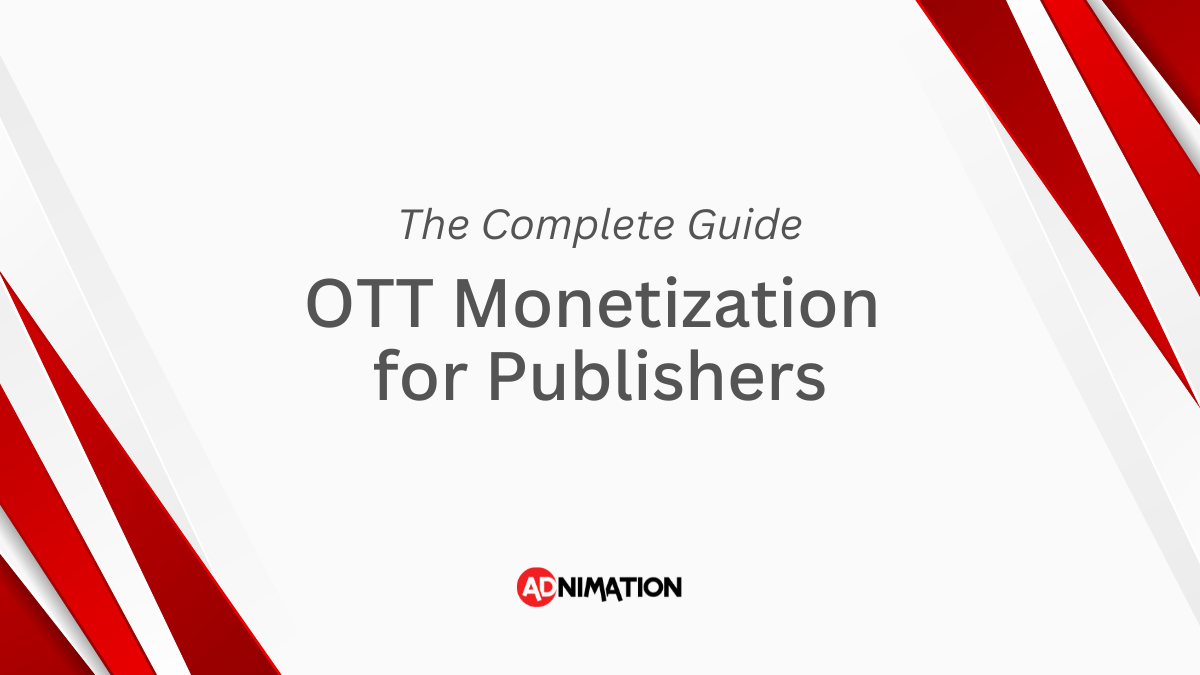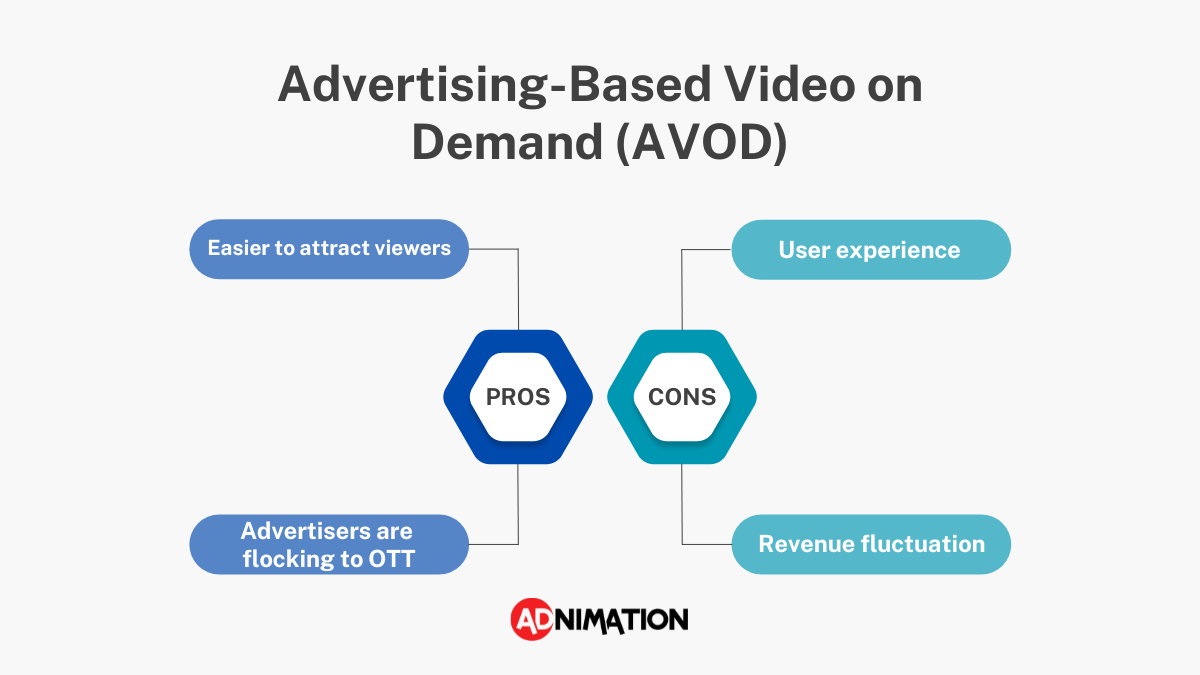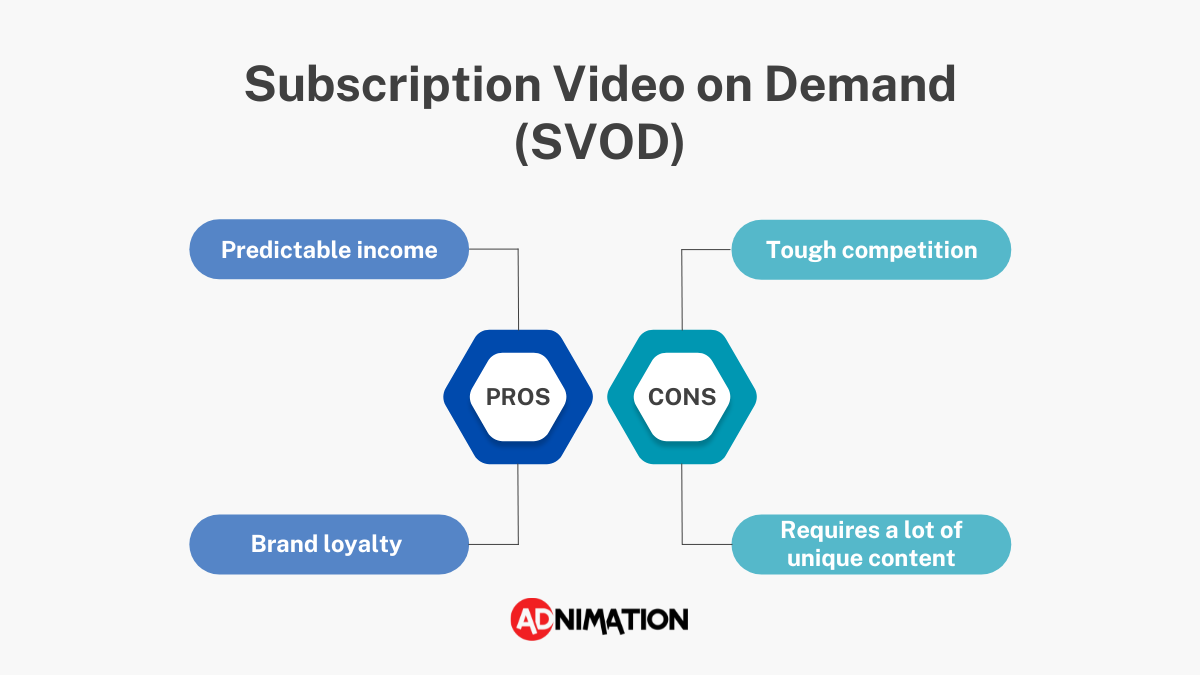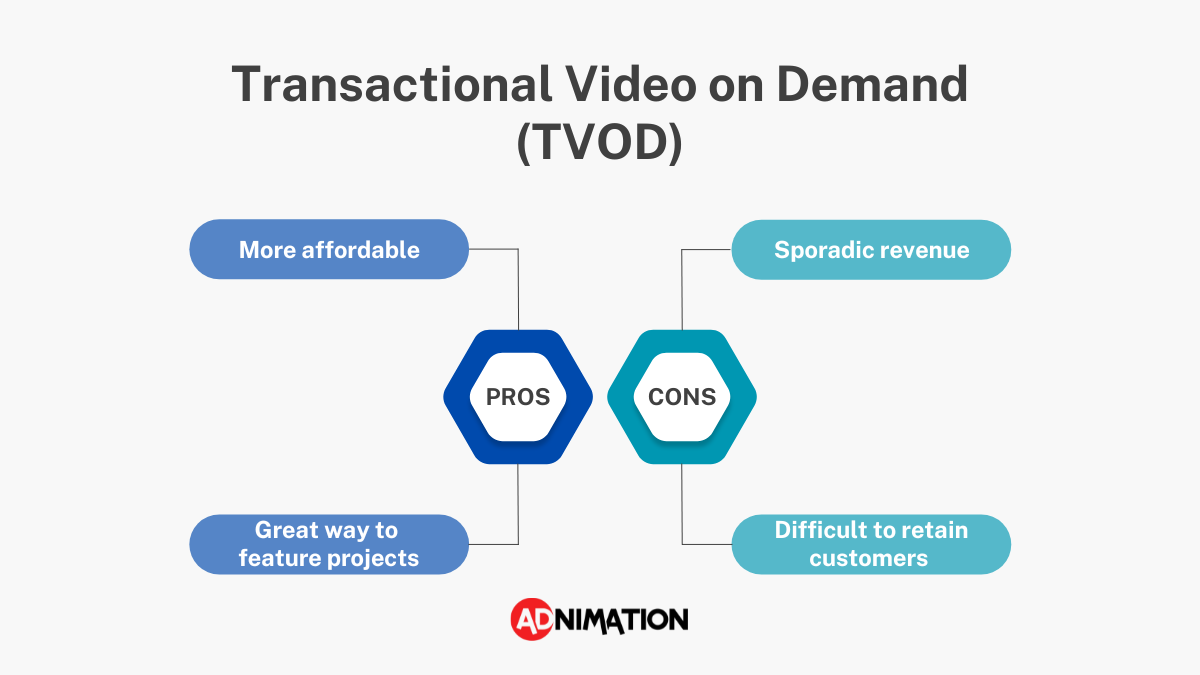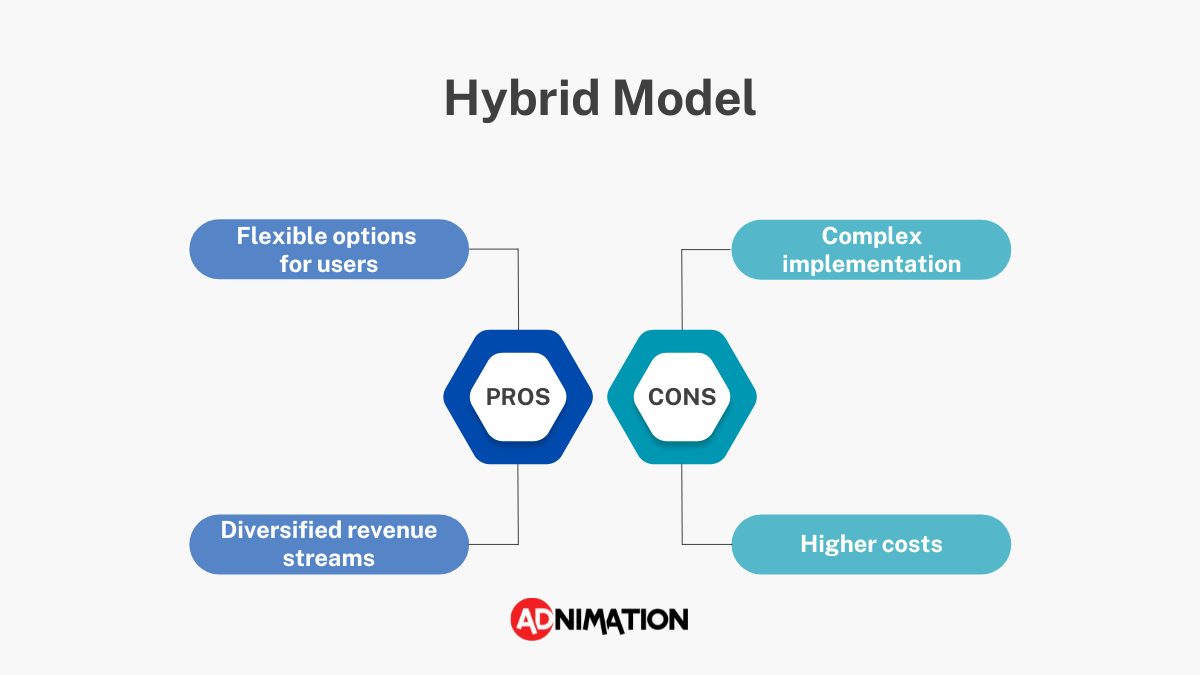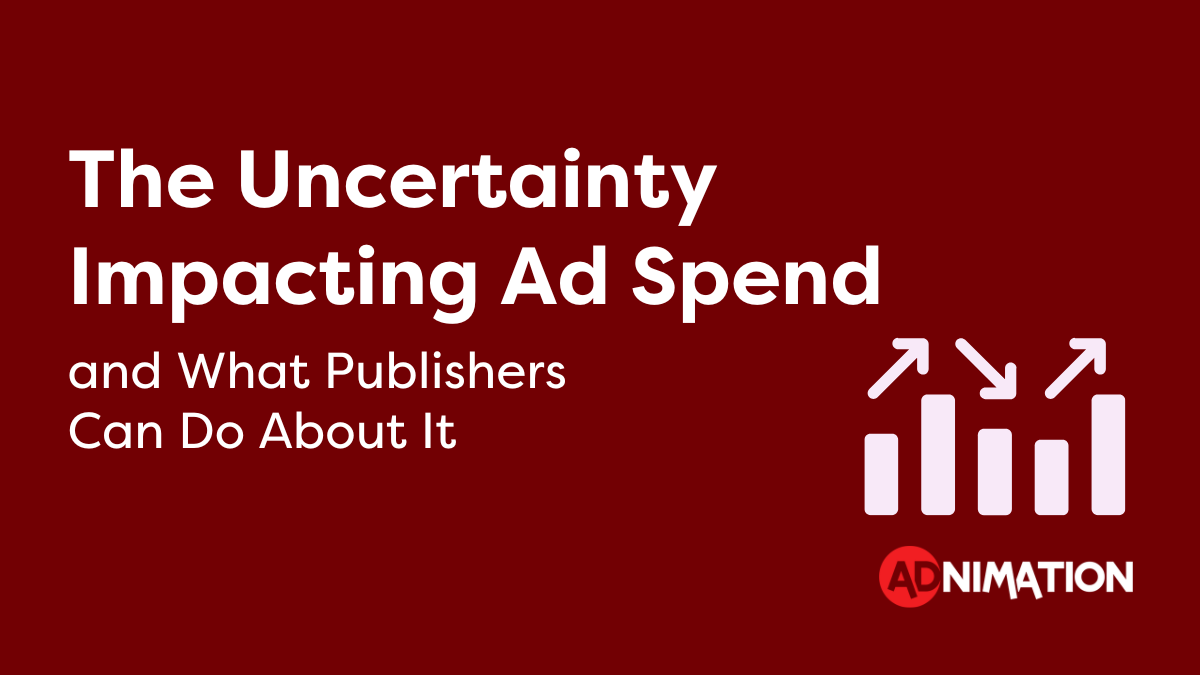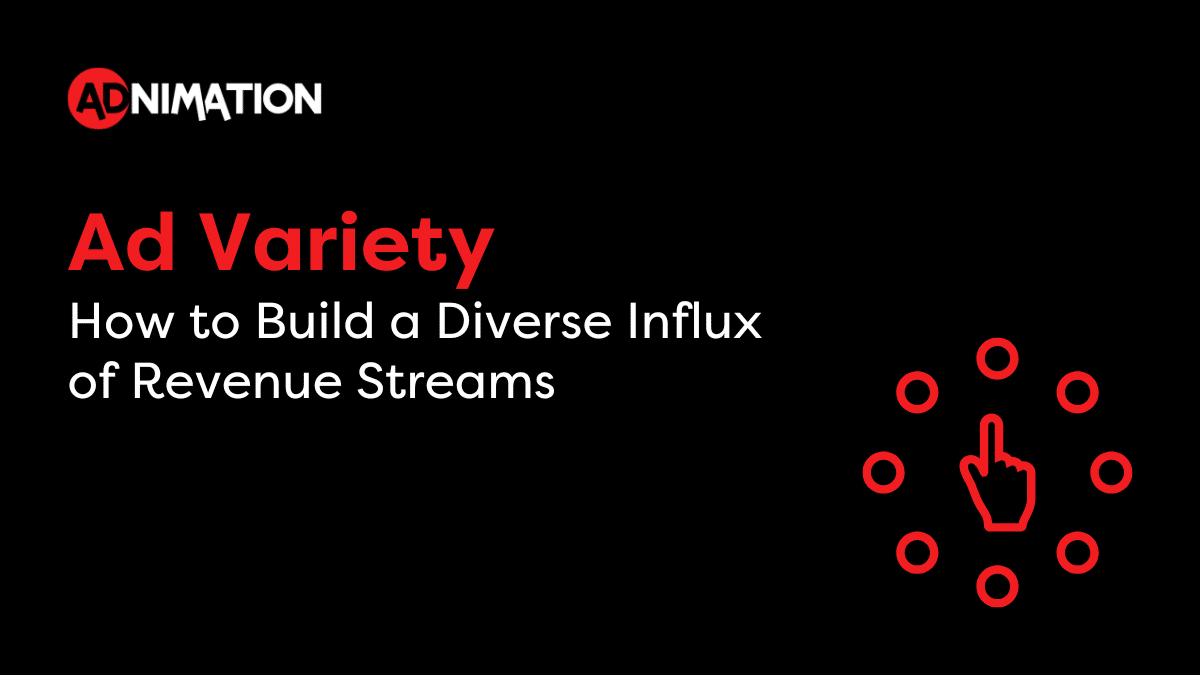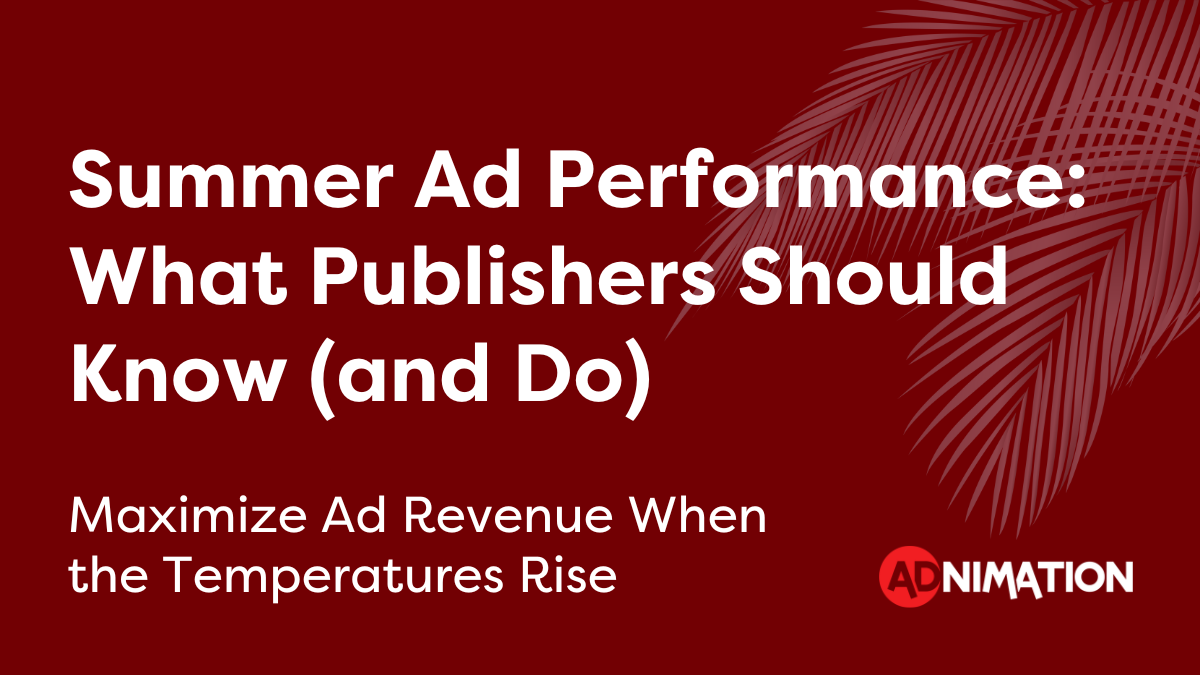As a publisher specializing in over-the-top (OTT) content, you are already fully aware of the power and potential of OTT and CTV.
That being said, we won’t waste your time with basic explanations, such as the differences between OTT, CTV, and Linear TV. Instead, we’re here to help you learn about OTT monetization. And we got you covered.
In this article, we’ll explore the four primary models to monetize OTT content – AVOD, SVOD, TVOD, and hybrid – and offer a thorough examination of their respective pros and cons.
Advertising-Based Video on Demand (AVOD)
Most OTT apps and content publishers prefer the AVOD model for monetization.
With this model, publishers utilize programmatic video ads to generate revenue while providing viewers with free and unlimited access to their content.
The AVOD model allows for higher ad revenue as the audience size grows, making it a popular choice for maximizing profits.
AVOD Advantages for Publishers
The AVOD OTT monetization model offers two significant advantages:
Viewers Love Free Content
Quality and free content is a winning combination for attracting viewers.
By placing ads strategically and adjusting their frequency, the vast majority of users are willing to watch ads in exchange for free content.
That is why AVOD services have outpaced their subscription video on demand (SVOD) counterparts. According to Comscore’s 2022 State of Streaming report, U.S. households increased their usage of AVOD services by 29% compared to a 21% increase for SVOD services.
As we will see later on, SVOD is effective, but implementing it is challenging. This is especially true for smaller publishers that don’t have the resources of giants like Netflix and Amazon.
OTT Is in High Demand by Advertisers
As the popularity of OTT content continues to soar, advertisers are increasingly drawn to OTT apps.
They are willing to pay significantly higher CPMs for OTT ads compared to traditional digital advertising due to advanced targeting, high viewability, and larger budgets.
The high demand for OTT content far outstrips the supply, making your OTT content app incredibly valuable to advertisers.
AVOD Disadvantages for Publishers
The AVOD OTT monetization model has two primary disadvantages:
Inconsistent Revenue
Factors outside of your control, such as market conditions or seasonality, can significantly affect ad revenue.
When the market is struggling, advertisers reduce their spending, resulting in lower revenue for publishers. In contrast, SVOD revenue is less vulnerable to market conditions as the revenue stream is more predictable.
User Experience
Although ads have become commonplace in our daily lives, some viewers still prefer an ad-free user experience.
As a publisher, you need to strike a good ad/content balance. The aim is to generate a substantial revenue while avoiding overwhelming the viewer with too many ads.
How to Implement AVOD
As with all programmatic video advertising, the key is competition.
The more quality advertisers you have competing against each other, the higher you can charge for your ad inventory.
The best way to access all of these advertisers is through Google, which runs the world’s largest ad exchange. The problem is that Google arrived a little late to the OTT game, and only in 2022 awarded its first product to monetize OTT and CTV content.
Fortunately, we at Adnimation were the first company to successfully launch Google’s CTV and OTT monetization product – and with strong results.
Subscription Video on Demand (SVOD)
SVOD differs from AVOD by requiring users to pay a subscription fee, in exchange for uninterrupted access to content.
The past few years have seen the explosive growth of the SVOD model, fueled by popular services such as Netflix, Amazon Prime, HBO Max, Hulu, and Disney+.
Although not yet as popular as AVOD, SVOD platforms have become a major force in the OTT market.
SVOD Advantages for Publishers
The SVOD OTT monetization model offers two main advantages:
Brand Loyalty
Compared to AVOD, SVOD services typically have higher brand loyalty.
Users who pay for the service are invested in it, and if they don’t find it valuable, they will not continue to pay for it. This strong brand loyalty leads to long-term engagement and steady revenue.
Consistent Income
As a business, having a reliable and consistent source of income is critical.
When revenue is predictable, you can plan more effectively and continually invest in producing top-notch content. Plus, you have the flexibility to increase subscription fees as needed.
SVOD Disadvantages for Publishers
The SVOD OTT monetization model has two challenges:
Fierce Competition
Establishing a successful SVOD service in a market dominated by heavyweights such as Netflix and Amazon Prime can be challenging.
As a new entrant, you will face fierce competition from established brands, making it more difficult to attract subscribers.
Additionally, consumers have a limited number of subscriptions they are willing to pay for, making it increasingly challenging to persuade them to add another service.
You Need a Lot of Unique Content
Producing unique and engaging content requires a lot of resources.
This makes it difficult for publishers that don’t have the vast resources of companies like Netflix and Amazon. As a result, it can be tough to entice customers to pay for their service without having high-quality content.
Transactional Video on Demand (TVOD)
The pay-per-view model, or TVOD, charges viewers a one-time fee to access a single piece of content.
TVOD options are offered by Google, iTunes, and Amazon.
The model includes two subcategories: electronic sell-through (EST) and download to rent (DTR).
EST allows users to purchase permanent access to a piece of content, meaning they own it and can watch it whenever they like.
DTR, on the other hand, allows users to rent a piece of content for a specific period of time, usually 24 to 48 hours, after which they no longer have access to the content.
TVOD Advantages for Publishers
The TVOD model offers two main advantages:
Low Cost for Viewers
TVOD offers a cost-effective solution for viewers who seek access to premium content without committing to a recurring subscription fee.
Opportunities to Feature Projects
TVOD allows publishers to focus on producing high-impact stand-alone projects, as opposed to the constant flow of content required for AVOD and SVOD models to retain viewers.
This means that TVOD does not place a burden on publishers to constantly create new content, allowing them to concentrate their efforts on producing high-quality, noteworthy projects.
TVOD Disadvantages for Publishers
The TVOD model has two main disadvantages:
Challenging to Retain Customers
TVOD content is targeted towards users who typically only make a one-time purchase, resulting in a lower likelihood of repeat business. This lack of customer loyalty makes it difficult to retain long-term users.
Inconsistent Revenue
The revenue stream from TVOD is the most unpredictable compared to other models.
It’s challenging to predict how many users will purchase a new piece of content, making it difficult to plan and budget effectively.
Hybrid Model
The hybrid model utilizes a combination of AVOD, SVOD, and TVOD to monetize content.
This enables publishers to reach a wider audience and cater to different user preferences by offering multiple methods of access.
Diversifying revenue streams through the hybrid model is a common approach taken by publishers.
Hybrid Advantages for Publishers
The hybrid OTT monetization model has two main advantages:
Diversified Revenue
A diversified revenue stream can bring significant benefits to a business.
When ad revenue is affected by market conditions, for example, subscriptions can offer a stable source of income.
Conversely, if subscription revenue declines, ad revenue or TVOD purchases can provide additional support and help maintain overall revenue levels.
Flexibility for Viewers
The hybrid model offers users a more flexible and varied choice of content.
It allows users who do not want to pay for a subscription to access some content through ads, while those who prefer premium content can pay for a subscription or purchase individual pieces of content.
This approach caters to different user preferences and provides a wider range of options, making it more likely to attract and retain users.
Hybrid Disadvantages for Publishers
There are two major disadvantages of the hybrid model:
Higher Overall Costs
Publishers incur higher costs in developing, maintaining, and supporting multiple monetization methods involved in a hybrid model.
Complex Implementation
Each method comes with its own implementation challenges. Add all three together, and that’s three times the difficulty.
What’s Best For You
The AVOD monetization model is the go-to option for most OTT publishers.
To increase your earnings, it helps to partner with a company like Adnimation that has access to the world’s largest OTT video ad demand through Google. Click here for a free consultation.
As your business attracts more viewers, you can explore a hybrid model and assess whether SVOD and TVOD are suitable for your needs.

